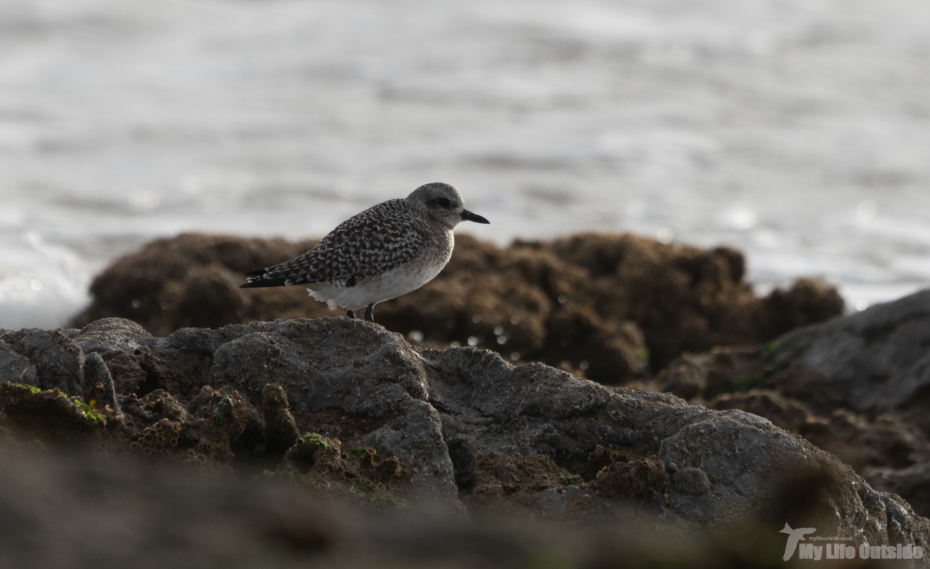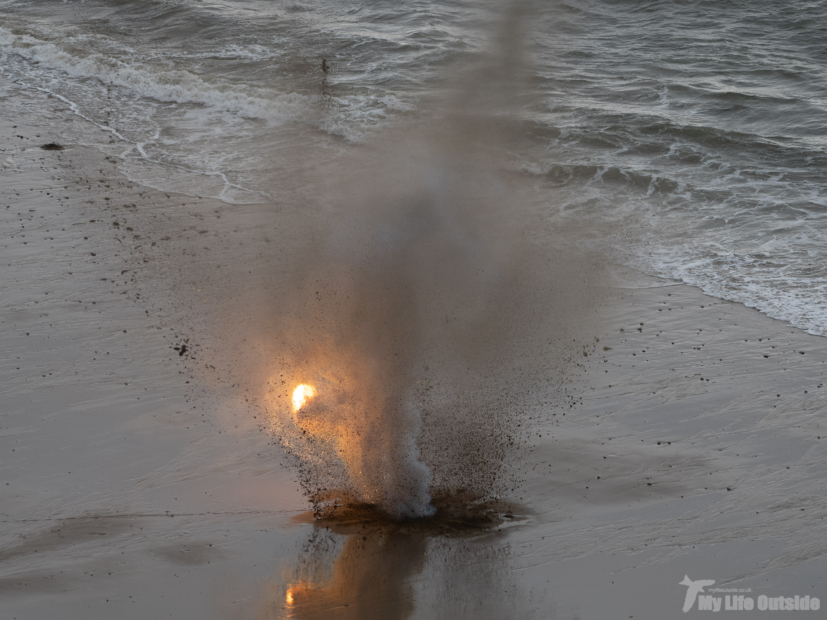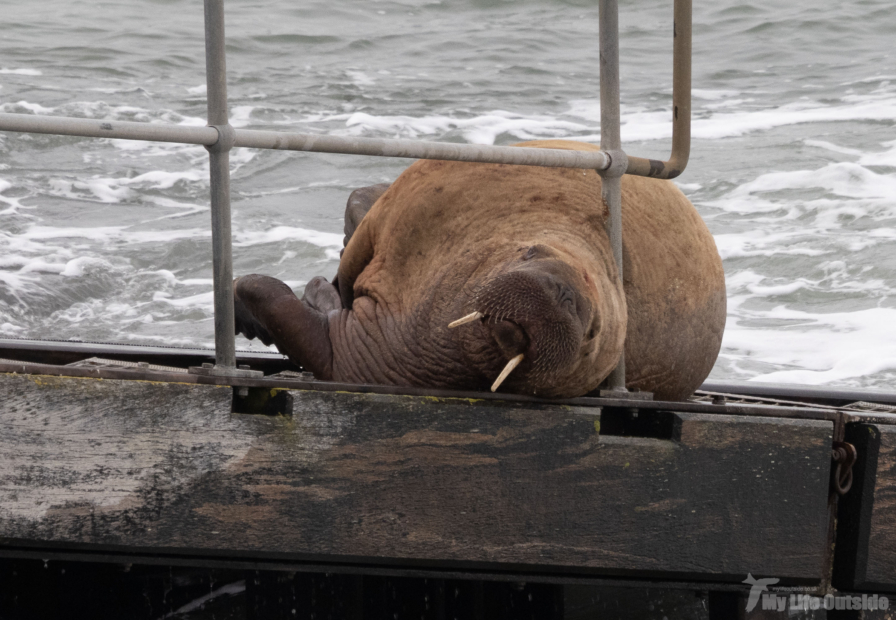Time to make use of my time machine as we whisk ourselves back to last weekend. In contrast to the grey clouds that had dominated the day before, Sunday was awash with sunshine and clear blue sky for as far as the eye could see. After having already ticked off some spring migrants in the shape of Chiffchaff and Sand Martin, the cliffs along the Gower coast seemed like the best place to head to in the hope of an early Wheatear or two. We started off in Mewslade valley where the woodland was alive with birdsong and the ground carpeted in fresh Wild Garlic. A pair of Great Spotted Woodpecker were flitting through the treetops whilst from the farmland behind the distinctive call of a Green Woodpecker could be heard. Other calls echoing around the narrow valley included Goldfinch, Chiffchaff, Chaffinch, Great Tit and Robin, of which this individual was very tame.
Where open ground and Gorse takes over from the trees it was hard to miss the sound of bees buzzing around the freshly opened flowers. Bravely risking scratches and stings (how macho!) I poked my camera around to try and get a few macro shots. This Honeybee was gorging itself on the abundance of pollen and was using its legs to hold the petals of the flowers apart to allow even deeper entry. The yellow sacks on its legs are formally knows as Pollen Baskets and are what the bee uses to carry pollen back to the hive.
We moved on to Thurba Head next to see if the Fulmars had returned to the small breeding colony there. Initially all looked quiet but as we poked our heads over the edge we could see at least seven birds either already on ledges or gliding past on the light breeze. This individual looked well settled and I wouldn’t be surprised to see a few eggs laid very soon.
Although sited on the shady side of the head making photography a little bit more difficult, the Fulmars certainly aren’t left wanting when it comes to the view.
In the same area we saw a pair of Chough (probably the same birds that I saw last week gathering nesting material on Rhossili head) but they didn’t stick around for long and were soon on their way toward Overton. We saw them on several more occasions throughout the day but they were always in the air. Something a bit less mobile were these ‘Puffball’ mushrooms that had already expelled their cargo of spores.
After an unsuccessful attempt to find Paviland Cave we spent a good hour scanning the fields around the nearby farm of the same name. An overwintering flock of Lapland Buntings has often been reported here but the closest we got was a family of Reed Buntings mixed in with a few Chaffinches. We did have a major success on a single section of fence that firstly delivered one male and two female Stonechats (my first of the year) before they were all scared off by a cracking male Wheatear.
It’s really fantastic to find some Stonechats as their numbers have taken a real hammering locally after two very cold winters. I also look forward to another season of trying to get a few decent photographs of Wheatears. They never come quite close enough.
Our return route was further inland where a couple of small ponds that have presumably been built to water cattle held some rather unexpected birds. The first contained four Teal and four Gadwall, the second a Moorhen and the third a Grey Heron. I wonder if these are monitored on a more regular basis as they look like prime locations for the odd rarity to pop up in.










4 Comments
Unknown · March 17, 2011 at 9:31 pm
Absloutely grand series Adam. Boom & Gary of the Vermilon River, Canada.
theconstantwalker · March 17, 2011 at 9:45 pm
Adam you really do live in a beautiful part of the UK. Lovely images.
holdingmoments · March 17, 2011 at 11:02 pm
Love that shot of the Fulmar; and their view. Stunning.
Hilke Breder · March 18, 2011 at 10:11 am
Enjoyed reading about your hike. Loved the pics of the Robin, the Fulmar, the Wheatear…. actually all of them. Spring is much further along in your part of the world.